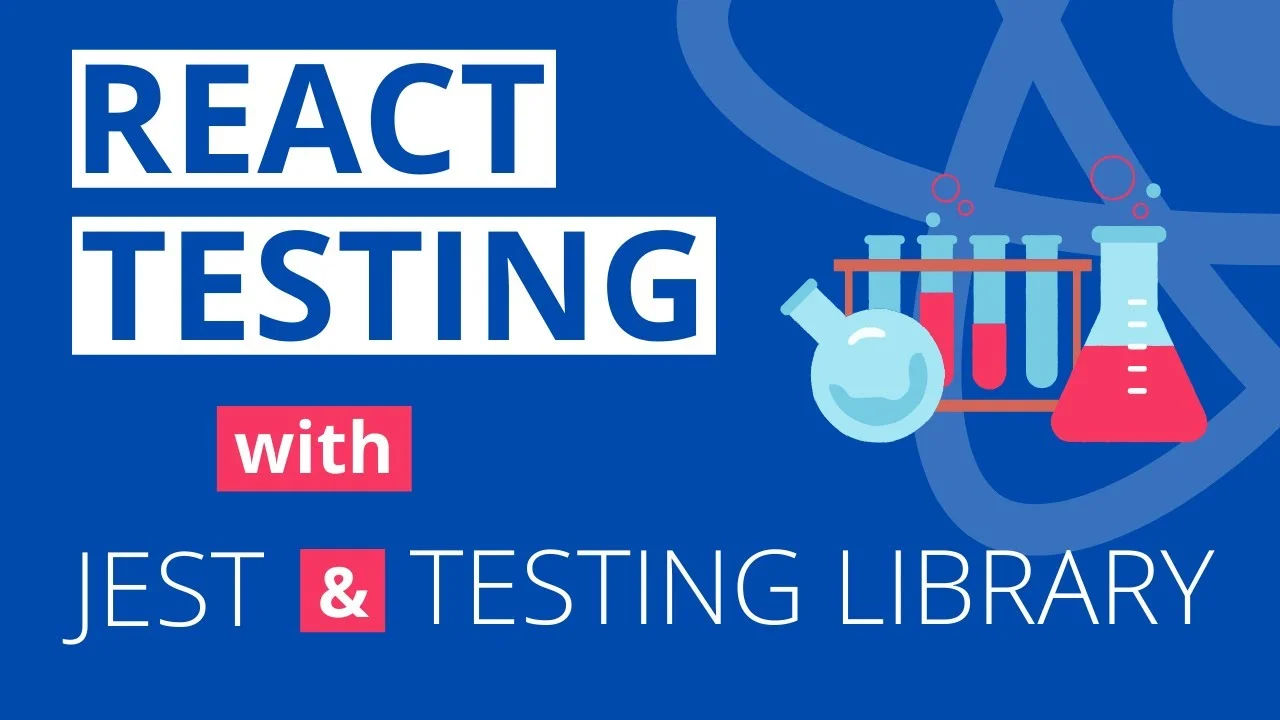React Testing - Comprehensive Guide
Introduction
Testing lies at the heart of building a robust and reliable React application. It’s not just a chore; it’s an essential part of the software development process that ensures your app functions correctly and remains stable as it evolves. In this blog, we’re going to dive into the intricate world of React testing using Jest and React Testing Library. We’ll discuss best practices, set up a clear and efficient folder structure, and provide real-world code examples to demystify the process.
Table of Contents
- The Significance of Testing
- Setting Up Your React Testing Environment
- Writing your Jest Test
- Understanding React Testing Library
- Crafting Tests the Right Way
- A Blueprint for Efficient Testing Structure
- Conclusion
1. The Significance of Testing
Before we dive into the technical nitty-gritty, let’s take a moment to appreciate the profound importance of testing. It’s not just about ticking off a checklist; it’s about avoiding the iceberg lurking beneath the surface of your application. Remember the Titanic? An overlooked bug can lead to colossal problems in your codebase.
// Example of a common bug that testing can catch early
function add(a, b) {
return a - b; // This should be a + b
}2. Setting Up Your React Testing Environment
To embark on this journey, you’ll need a proper testing environment. This involves setting up Jest, the go-to testing framework for JavaScript, and installing the necessary dependencies. Creating configuration files is part of the deal.
# Install Jest and React Testing Library
npm install --save-dev jest @testing-library/react @testing-library/jest-dom
# Create a Jest configuration file (jest.config.js)3. Writing your Jest Test
Now, let’s roll up our sleeves and write some code. We’ll create a simple React component and script our very first Jest test. This will cover the basics of testing React components, from rendering to making assertions.
// A Greeting Component
function Greeting({ name }) {
return <div>Hello, {name}!</div>;
}
// Test Script
import React from 'react';
import { render } from '@testing-library/react';
import Greeting from './Greeting';
test('it renders a greeting message', () => {
const { getByText } = render(<Greeting name="John" />);
const greetingElement = getByText('Hello, John!');
expect(greetingElement).toBeInTheDocument();
});This example illustrates how to ensure that your Greeting component delivers the expected output with a given name.
4. Understanding React Testing Library
Introducing the protagonist, the React Testing Library. This library takes a user-centric approach to testing, emphasizing queries and fireEvent to interact with your components as real users would.
// Testing with React Testing Library
import { render, screen, fireEvent } from '@testing-library/react';
const handleClick = jest.fn();
render(
<button onClick={handleClick}>Click Me</button>
);
const button = screen.getByText('Click Me');
fireEvent.click(button);
expect(handleClick).toHaveBeenCalledTimes(1);In this example, we use React Testing Library to simulate a button click and ensure that the handleClick function is called as expected.
5. Crafting Tests the Right Way
It’s not just about writing tests; it’s about crafting them in a way that makes them effective and maintainable. We’ll explore best practices such as clear test naming, avoiding implementation details, and keeping your tests focused and independent.
// An example of good test naming
test('should render an error message when the user inputs an invalid email', () => {
// ...
});import React from 'react';
import { render, screen } from '@testing-library/react';
import Button from '../components/Button';
test('renders the button component', () => {
render(<Button label="Click me" />);
const buttonElement = screen.getByText(/Click me/i);
expect(buttonElement).toBeInTheDocument();
});
Clear and descriptive test names make it easier for everyone to understand the purpose of your tests.
6. A Blueprint for Efficient Testing Structure
A well-organized folder structure is essential for efficient testing. We’ll discuss how to separate unit tests from integration tests and keep your testing code clean and organized.
src/
components/
Button/
Button.js
Button.test.js
utils/
api.js
api.test.js
__tests__/
integration.test.jsThis recommended structure separates tests by component, utility functions, and integration, ensuring clarity and maintainability.
7. Conclusion
In conclusion, React testing with Jest and React Testing Library is a valuable skill for ensuring the reliability of your applications. By adopting the best practices and organized folder structure we’ve discussed, you can create more robust and maintainable React code. Testing is a practical step toward building dependable software.
